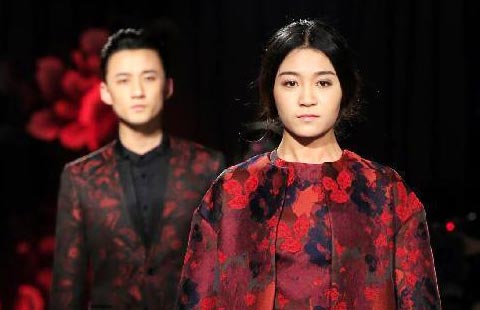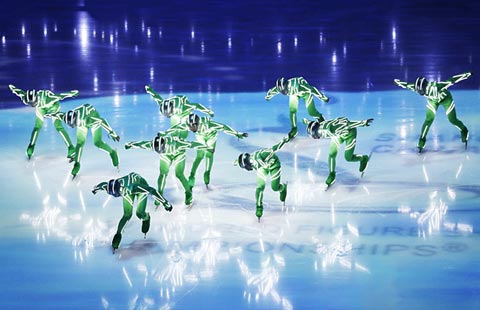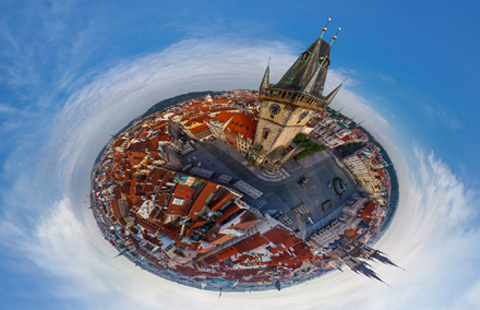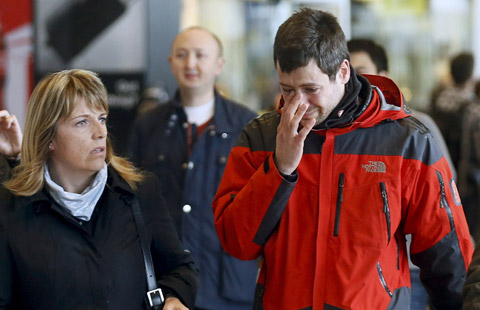Authors trace history of Chinese art ownership
Updated: 2015-03-27 06:46
By AMY HE in New York(China Daily USA)
|
||||||||
Like other Chinese art enthusiasts, Karl Meyer and Shareen Blair Brysac followed the sale of Robert Ellsworth's huge Asian art collection at Christie's for Asian Art Week with much interest. They went to Christie's gallery in Rockefeller Center in mid-Manhattan to look at the collection and kept up with the daily auctions that took place during the week.
But unlike other Chinese-art enthusiasts, Meyer and Brysac just published a book that looks at America's long history of acquiring Chinese art, and the two believed that the Ellsworth collection was one of the most important American collections of Asian art, and the last great sale to take place.
"There's never going to be a sale like that again from the United States, because there's not going to be a dealer who's going to be able to collect all of that sort of stuff again," Brysac told China Daily.
"The premium paid because of the provenance of the Ellsworth collection was so high that it would drive museums and even the American collectors out of the markets. It's all the Chinese wanting to have a piece of Ellsworth, because he chopped his seals on the paintings," she said. "You've got a piece of Ellsworth if you've got a piece of that."
Meyer added: "He wrote books on the subject, he cultivated authorities on the subject. He wasn't just a dealer, he was something more than that — he was a super dealer."
Meyer and Brysac's latest book — The China Collectors, published on March 10 — traces the century-long history of art dealers who traveled to China to acquire — and at times, steal — art and how the pieces have traveled far and wide to the private collections of some of the wealthiest Americans, and how some eventually end up in museum collections. Meyer is a former journalist at the Washington Post and Brysac is a former producer at CBS News.
The study of provenance, or the history of ownership, for Chinese art is relatively new, Brysac said, and there are many historical archives that people have yet to look examine. These troves of information were available, but not studied, and reveal a lot about the history of art acquisition, especially for a country like China that has experienced a tumultuous modern history that has led to foreign plunder, the authors said.
"We knew about files that nobody had looked into and we're always suckers for great stories. And they were great characters. These people were really, really interesting, and we love to tell good stories. These were stories that had not really been told," Brysac said.
Though Ellsworth was one of the great American dealers of Chinese art, he had even more famous predecessors like C.T. Loo, a major figure in the acquisition and trade of Chinese art. Loo was a Chinese dealer who helped raise the visibility of Chinese art in the Western world, but was also responsible for much looting in his home country.
Photography was starting to be used to document art found in China, and Loo was one of the earlier dealers to use photographs as a way to steal objects.
"What people like Loo would do was send these photographs over to China to their scouts and the scouts would hire the local peasants to steal to order, so it was kind of a mail order business. That's how a lot of it had gotten out — a lot of Buddhist sculpture came out that way. It was photographed and then stolen to order. That is really the sad tragic tale of a lot of the looting that went on from caves," Brysac said.
China has for the last decade sought to recover artwork taken out of the country, and the authors said that there will be ongoing conversations within North American museums about ownership. So far, the Chinese government has not made many official requests for items to be returned, but have used other market means, Meyer said.
It started in 2000 with a joint Christie's/Sotheby's imperial sale, where three bronze heads from the Zodiac Fountain in the Old Summer Palace were put on sale. The winners of the auctions were the Poly Group, a corporate entity originating in the People's Liberation Army.
"That started off the use of the market mechanism to bring back things," said Meyer.
"I'm fascinated to see what's going to happen out of Asia Week this month. How much of it is going to come back and be donated? You combine that with the fact that in the last ten years there have been 3,000 new museums in China, most of them devoted to the arts. What are they going to fill them with? That's a real question."
amyhe@chinadailyusa.com

 Top 10 steel producers in China
Top 10 steel producers in China
 Highlights of China Fashion Week
Highlights of China Fashion Week Cockpit mystery emerges
Cockpit mystery emerges
 ISU figure skating worlds opens in Shanghai
ISU figure skating worlds opens in Shanghai
 Canola flowers form the emblem of harmony
Canola flowers form the emblem of harmony
 Your city in the shape of tiny round planet
Your city in the shape of tiny round planet
 Families mourn victims of Airbus A320 crash
Families mourn victims of Airbus A320 crash
 38,000 Brazilian troops to safeguard 2016 Rio Olympics
38,000 Brazilian troops to safeguard 2016 Rio Olympics
Most Viewed
Editor's Picks

|

|

|

|

|

|
Today's Top News
Apple Pay would face battle in China: Analysts
Michigan firm gets $1 billion Chinese contract
Teen's DNA project nets student Intel science award
China, US bear down on fugitives, 'Sky Net' unleashed
Analysts: US urged to not politicize bank
Germanwings' co-pilot 100 percent fit to fly: Lufthansa CEO
Yuan backed on Silk Road
RMB hub makes a splash
US Weekly

|

|








